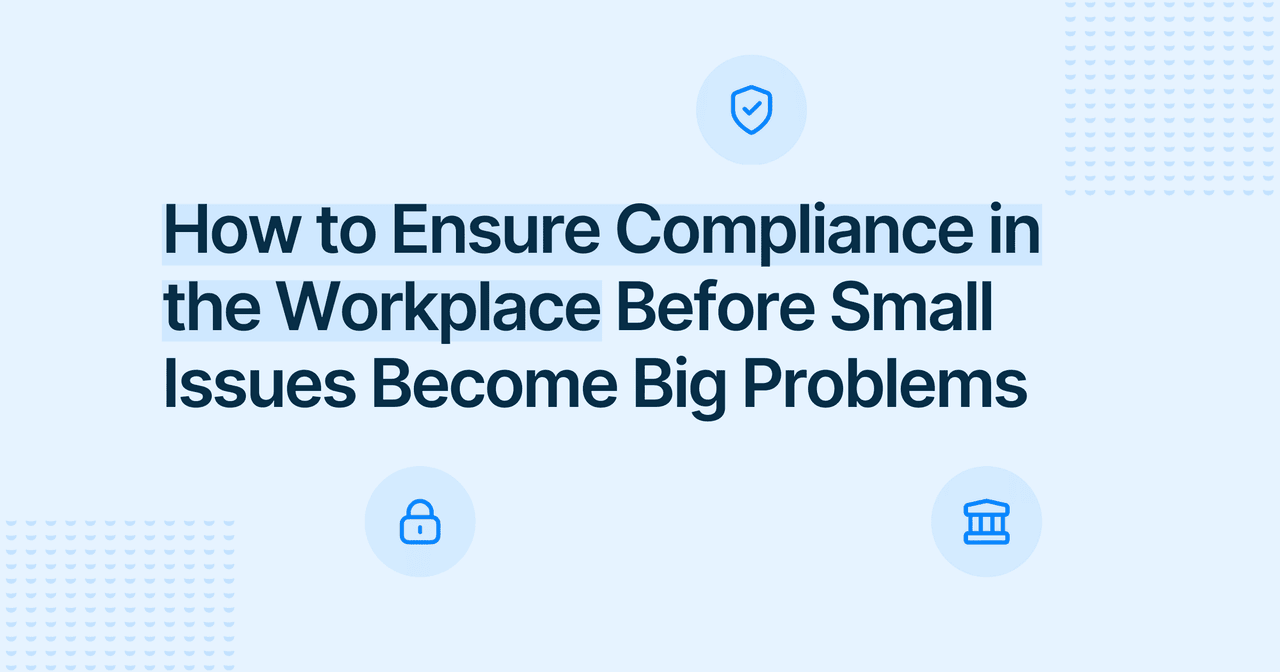



Discover the benefits of a transparent organization!
Try our free platform and strengthen the culture of openness in your team.
Workplace Environment

Yeva Bartkiv
Copywriter
Published
2025-03-06
Reading time
5 min


Table of contents
Subscribe to our newsletter
They say, "What happens in Vegas stays in Vegas," but when it comes to workplace misconduct, what happens at work doesn’t just stay at work - it can affect morale, productivity, and even legal liability. Workplace misconduct is a serious issue that can shake the foundation of any organization. Whether it is tardiness, embezzlement, or sexual harassment, understanding the different types of misconduct and knowing how to report workplace misconduct is essential for keeping your workplace safe, professional, and drama-free.
If you’re an HR professional, manager, or employee who wants to ensure a fair, ethical, and legally compliant work environment, this guide is for you. Buckle up - we're diving into everything you need to know about acts of misconduct in the workplace and how to handle them like a pro.
Imagine running a business where employees show up late, ignore company policies, or even steal from the cash register. Sounds like a nightmare, right? That’s why workplace misconduct is such a big deal - it disrupts the flow of business and can lead to serious misconduct in the workplace, legal action, and even financial losses.
At its core, workplace misconduct refers to any behavior that violates company policies, ethical norms, or legal standards. Some actions might be minor infractions, while others can be so severe that they lead to immediate termination.

Workplace misconduct isn't just an HR headache - it hits where it hurts: the bottom line. Research shows that U.S. businesses lose billions annually due to employee theft alone. And lawsuits? They can cost millions. When misconduct goes unchecked, companies risk damage to their reputation, financial penalties, and an exodus of top talent who don’t want to work in a toxic environment.
Let’s get into the nitty-gritty. Types of misconduct range from slightly irritating to absolutely unforgivable. Here’s what you need to watch out for:
Misconduct isn’t a one-size-fits-all issue. Some actions may be minor slip-ups, while others can bring a company to its knees. Understanding the spectrum of workplace violations is crucial for enforcing fair and appropriate disciplinary procedures.
Not every mistake at work is a fireable offense. However, if left unchecked, small infractions can snowball into more significant problems. Simple misconduct, such as showing up late (tardiness) or frequently misusing office supplies for personal use, might seem insignificant initially, but they chip away at workplace discipline.
These violations disrupt workplace harmony and can cause significant financial or reputational damage. Think of insubordination, repeated absenteeism, or creating a hostile work environment. These are more than just annoyances - they can affect productivity and team morale and even lead to legal action.
When an employee commits gross misconduct, the consequences are severe. Embezzlement, sexual harassment, violence, or discrimination threaten a company’s culture and open the door to lawsuits, financial losses, and, in many cases, immediate termination. Employers must act swiftly to investigate and handle such violations properly.
So, you’ve witnessed something shady at work. What next? Many employees hesitate to report misconduct because they fear retaliation or think nothing will be done. But staying silent can make things worse.
Remember, you have whistleblower rights that protect you from retaliation. If you’re unsure, seek legal advice before making a report.

Once a report is filed, the real work begins. Companies must ensure a fair and thorough investigation to determine whether the accused party violated company policy.
You know the saying: “An ounce of prevention is worth a pound of cure.” The best way to deal with workplace misconduct is to stop it before it starts.
Good leadership isn’t just about hitting revenue targets - it’s about setting an example. If leaders cut corners, ignore types of employee misconduct, or fail to act when misconduct occurs, they send a dangerous message: Bad behavior is tolerated.
Ignoring acts of misconduct in the workplace is like ignoring termites in your house - sooner or later, everything crumbles. Whether you’re an employee, a manager, or part of HR, understanding, reporting, and preventing workplace misconduct is crucial for a productive and professional work environment.
Want to take it a step further? Book a demo to explore FaceUp, which helps manage and prevent misconduct in your organization. Because when it comes to workplace ethics, it’s always better to be safe than sorry.




Try our free platform and strengthen the culture of openness in your team.
Keep Reading

Alaa El-Shaarawi2025-12-058 min
Legal & Compliance

Alaa El-Shaarawi2025-12-048 min
Legal & Compliance

Alaa El-Shaarawi2025-12-037 min
Legal & Compliance

Alaa El-Shaarawi2025-12-029 min
Legal & Compliance